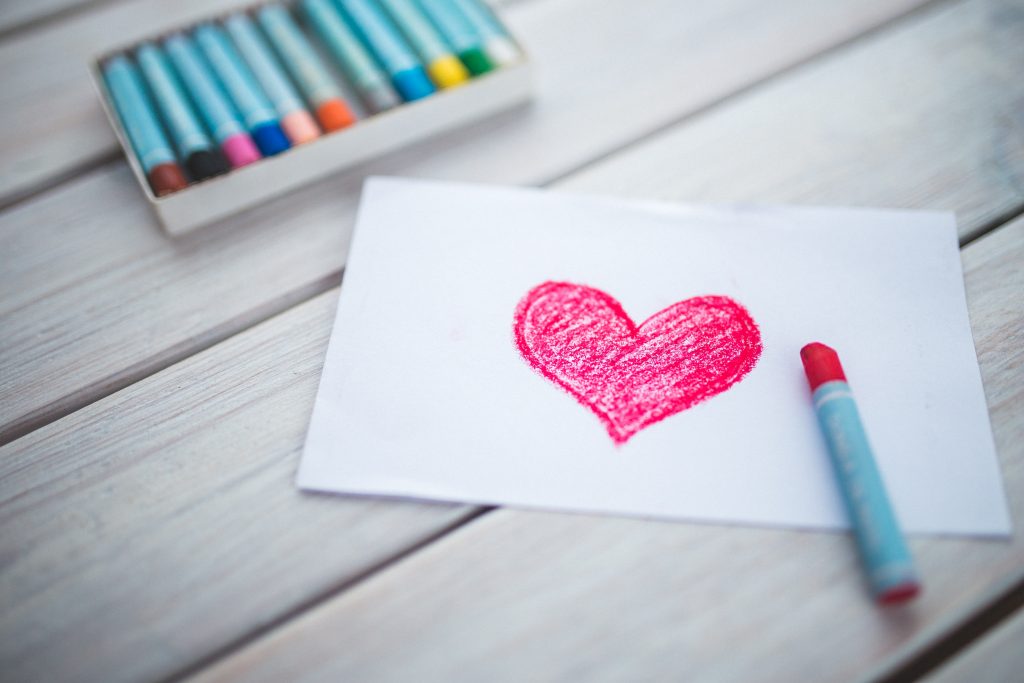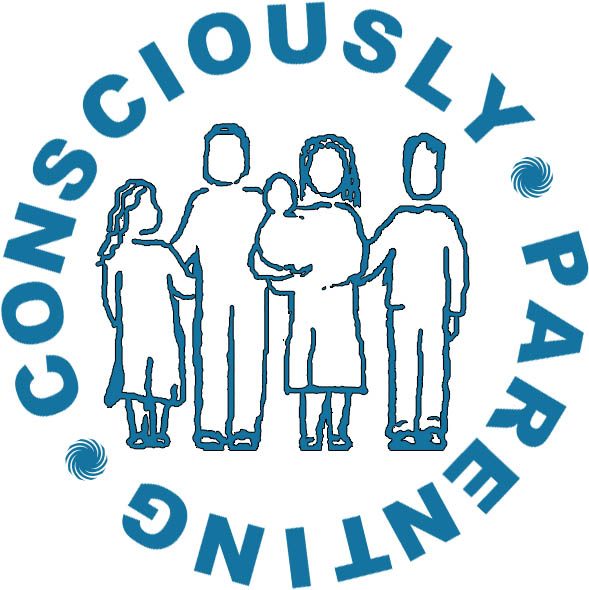Making Space for the Little Things

My youngest, who is turning 18 on Friday, came to me last week to talk about something that happened with some of his friends. He was upset at how something had gone when they were playing a game together and he really wanted to talk about it. That conversation shifted into some deep sharing about the connections he was making about himself and things that had happened when he was younger. As a mom, the fact that he wanted to talk to me about this at nearly 18 was beautiful. I know that I didn’t talk to my parents about my friend challenges or my introspective thoughts at 17, so I really honor that my both of my boys do come to me and share important things with me.
As I was reflecting later about our conversation, it occurred to me that when we don’t make room for the small things, they won’t come to us with the big things.
We have a tendency to minimize when small things happen, good or bad. This is true for ourselves and our children. We invalidate our own experience if we have a bad day. When our kids talk about a situation where there are feelings, we tend to distract or try to fix what’s happening for them, if we give it any attention at all. Sometimes we ignore it because it doesn’t seem important. And some parents will tell kids to focus on the positive and invalidate the hurt the child might be feeling when the child just needs a space for their feelings to be expressed, released, and heard.
But even before they have a hurt, they try to share the daily happenings with you that they feel are important.
For a young child, the small thing might be the flower they found on a walk or something they colored that they want you to see.
For an older child, it might be something that happened at school (positive or not).
For a teen, it might be sharing a dream or something fun that happened with a friend.
When it’s safe enough to go to someone with the small things, we are more likely to go to that same someone with the bigger things, too. When there is room for our small feelings in a relationship, the feelings about an exciting thing that happened, a stubbed toe or a disappointment, there is room to go with the bigger feelings that need to be expressed when something bigger happens. This is how we release tension from those experiences and connect with other important people in our lives. This is also how we integrate our experiences.
One of the most important things about creating a secure attachment with our children is having space for sharing thoughts and feelings in the relationship. For the parent, it’s creating a space where the thoughts and feelings can be shared and that means having a space where the parent can do that for themselves. That sharing can be in a partnership, with a friend, or with a safe other person in your life. Healing Story Circles are another place you can connect with others and be seen, heard, and felt. When that need is met as a parent, we can meet that need for our children. If we don’t have it, it is very difficult to give it.
I’d suggest you try sharing with another person who feels safe to you something that’s on your mind that isn’t a huge problem in your life, just something that you’re thinking about. It could be your drive to work, how you bought yourself flowers for your bedroom nightstand, or a time when you were disappointed about a part of your day. And just ask the other person to listen to you and maybe reflect what they heard you say. See how it feels to you.
We deepen into this idea with a conversation I had with Ray Castellino and Mary Jackson about telling and showing stories. We were talking about supporting our children to share their stories with us and we needed to begin the conversation with us as adults before we could get to the children. We can’t give what we haven’t experienced or don’t understand the importance of in our own lives. These patterns are transgenerational, and we learned them from our parents and they learned them from their parents, for better or worse. And if the patterns we learned aren’t healthy or supporting the way we want to raise our own children, we can change these patterns by beginning with the small things and creating a safe place for our kids, no matter how old they are, starting today.
The following is an excerpt from the Little People, Big Challenges Story Sharing audio recorded with Ray Castellino and Mary Jackson of aboutconnections.com in 2011. It’s a great opportunity to reflect on the importance of the sharing the little things that happen in our lives, so that there is actually a safe space to go with the big things when they happen.
Rebecca: That is right. I think many times parents do not have that space for them and it is something that we, as individuals and grownups, need to work on. Many times, we do not even think that our children might also need that space.
Ray: Right. If we don’t have it ourselves, how would we consider that the kids need it?
Mary: Our children especially need that space everyday. A place where they just have the chance to express their feelings about whatever is going on. That really supports them to be settled more throughout the day and the night, to sleep better and to connect.
Ray: I need that every day. To connect to someone on that level where I know I am heard.
Rebecca: Absolutely. Let’s talk a little bit about the purpose of telling our stories and showing our stories. Why do we need to do that?
Ray: The residual that is left over from an experience I have had, maybe a challenging, traumatic experience or maybe just a hard day – if I do not have anywhere to go with what my experience was, it gets stored in my body in the form of tension. My body holds it. That is part of how we are organized. Any experience that we have where we are not integrating that experience while we are having it leaves something over. A residual is left over in our bodies. It is in our nervous system, it is our body’s physiology, and it is stored in the form of stress/tension.
I have to have a way of expressing that residual tension in a way that is helpful to me and helpful to the people I am with. That is one part. The other part is that residual builds up when I am not integrating my experience as I am living moment to moment. If the parents are doing that, rest assured babies are doing it. How we are doing it as parents or grandparents is how our children and babies will be doing it.
Rebecca: Can you give an example of something that might not be integrated as we are going through our day? Can you give us just a concrete example of that?
Ray: Yes. Last night I was sleeping and I was awoken by somebody singing loudly in the street. My window was open. I woke up. It was not okay with me that somebody was doing that. It took me awhile to be with myself around that so that I could get out of my reaction to that person waking me up. When I did, I settled and did actually have to do something else for a period of time. If I did not spend the time that I did just with myself being with that, I would not have gotten to sleep. Since it was the middle of the night, I did not have anybody to communicate with. It would have been even better if I could have called one of the two of you up and said, “Hey, I’m not sleeping.” But I did not because I did not want to wake anybody up.
Mary: I think that when we get to sit with someone who cares about us, a friend, a family member, and share whatever we’ve gone through and our story is heard, seen, and understood, that it really supports the integration of whatever that incidence was. I know the other day I was just about to pull into a parking place and somebody else pulled in front of me and took it. There were feelings like “RARRRR”. When I went back home to an appointment, my assistant was there. I could share with her what happened and everything just really settled inside of me. I could really let go of the upset of that, not hold onto it, and carry it into the visit.
Ray: You would think that the stressful stuff that we hold on in our body – sure, there are big chromatic things that happen that certainly store in ours bodies. But also just the day-to-day mundane things. For example, I was on Skype with somebody, my phone rings, my other phone rings, and something else flashed up on my screen and I disoriented for a few minutes. Just too many things came at me at the same time and there was somebody behind me asking for information. All of a sudden, there were four things going on at the same time. I am not particularly a good multi-tasker and my system overwhelmed for a few minutes. I quickly got myself together and chose one the things to do to get it out of the way. Afterwards, my shoulders were tight. I was holding it. That is the time we should take a hug and connect with another human being.
Rebecca: Right.
Ray: Then there are those big things that happen. The birth did not go the way we wanted it to happen, there was a surgery, there was an illness, or somebody in the family died. Most of the time we are usually thinking about those big things. But it is the little stuff and the big things that are compressed together.
Rebecca: Right. And this is for adults. We are talking about adults here. It is important parents make that shift and understand our children are experiencing the same kinds of things.
[End transcript]
Next time your child comes to you with something seemingly small, stop what you’re doing and really listen. Watch their face as they share, look at their eyes, listen to their words and how it feels and join them for a moment in their world. Practice with the smaller things so they’ll come to you with the bigger things, too.
<3 Rebecca

